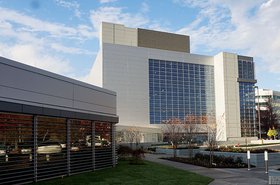Over the past 12 months, Uptime Institute Intelligence has been closely following regulatory developments in the area of sustainability. These include mandates based on the Task force on Climate-related Financial Disclosure standard, such as the EU’s Corporate Sustainability Reporting Directive and the UK’s Climate-related Financial Disclosure Regulations, and the EU’s Energy Efficiency Directive. These legal frameworks mandate the collection and reporting of corporate and data center-level information on building type and location, energy use, greenhouse gas (GHG) emissions, and operating metrics, such as power usage effectiveness (PUE) and work per energy.
Uptime Intelligence expects these types of regulations to propagate globally over the next five years.
Entering the thicket
Operational regulations such as these are new territory for the data center industry, which has primarily operated outside the thicket of environmental and operational regulations familiar to manufacturing entities. These rules arrive at a time when the physical size and energy and water intensity of recently constructed or proposed hyperscale and colocation campuses have captured public and governmental attention.
As regulations that require data center reporting and operational requirements propagate, digital infrastructure managers and executives are seeking guidance on the steps needed to maintain an effective compliance posture.
First and foremost, managers need to track the development of regulations that may affect operations at each of their facilities. A local, state, or national regulation typically takes at least six months, and often two or three years of consultation and discussion, before it becomes law. Staff members need to be assigned to track regulatory and legislative developments and prepare facilities for compliance. At a minimum, designated employees should:
- Track legislative and regulatory developments to anticipate the measurements, metrics, and operational performance data that will be needed to comply with the requirements.
- Identify, plan, and initiate projects to implement the necessary measurements, data collection and reporting systems, and energy and water efficiency improvements.
- Establish key performance indicators with goals to track and improve energy and operational performance to meet or exceed expected regulatory requirements.
Even if there is little or no sustainability legislation planned or expected in any country or region, it is still advisable to track the developments in key regions, such as the EU. Regulations can often be “exported,” and even if they do not become mandatory in a given country, they can become best practice or de facto standards.
To prepare for the expected regulatory mandates, digital infrastructure managers are advised to give as much importance to energy performance (work per megawatt-hours, MWh) and GHG emission reduction metrics and objectives as they do to those governing operational resiliency, reliability, and performance. Much of the legislation aimed at reducing energy consumption and carbon emissions is focused on improving these metrics.
Sustainability AND performance
Sustainability and operational performance metrics are not mutually exclusive; they can collectively advance both environmental and business performance. The following are some of the key areas that digital infrastructure managers need to address:
- Managers are advised to increase the utilization of their IT infrastructure. If managers set and pursue goals to improve average server utilization, servers running enterprise and office applications can achieve average utilizations approaching 50 percent and run batch jobs at average utilizations approaching 80 percent. Reaching these utilization levels can enhance business performance by reducing IT capital and operating expenditures. Environmental performance will also be improved through an increase in work delivered per MWh of energy consumed.
- IT equipment should operate with power management functions enabled if the workloads can tolerate the slower response times that are inherent in the functions. Deploying these functions can reduce average server energy use by 10 percent or more. An Uptime Institute survey of operators indicates that more than 30 percent of respondents already enable power management on some portion of their server fleet, capturing energy and cost reductions.
- Managers are advised to collaborate with their energy provider(s) to establish tactical and strategic plans to increase the carbon-free energy (CFE) consumed by a facility over time. Achieving 100 percent consumption of CFE will take 5 to 20 years (or more) to come to fruition, depending on the generation assets available in a given market. Collaboration with energy providers enables operators to reduce operational carbon emissions over time in line with government and customer expectations.
- Central cooling, IT space, and IT equipment infrastructure should be managed and optimized for best energy use, with automated control packages delivering the best results. These systems can improve system energy efficiency by 20 percent or more by scheduling central cooling units, adjusting IT space cooling delivery, and managing workload placement on the IT equipment infrastructure. This will maximize the utilization of these assets while minimizing their energy consumption when delivering the required workloads.
Improving the productivity of data center operations to prepare for regulatory requirements and enhance business and environmental performance is an ongoing, multi-year journey. It requires the total commitment of the management team and the IT and facilities operations staff, resourced energy efficiency improvement, and GHG emissions reduction plans. By taking early action, managers can demonstrate a commitment to sustainability and smooth the path to compliance with emerging regulations.





